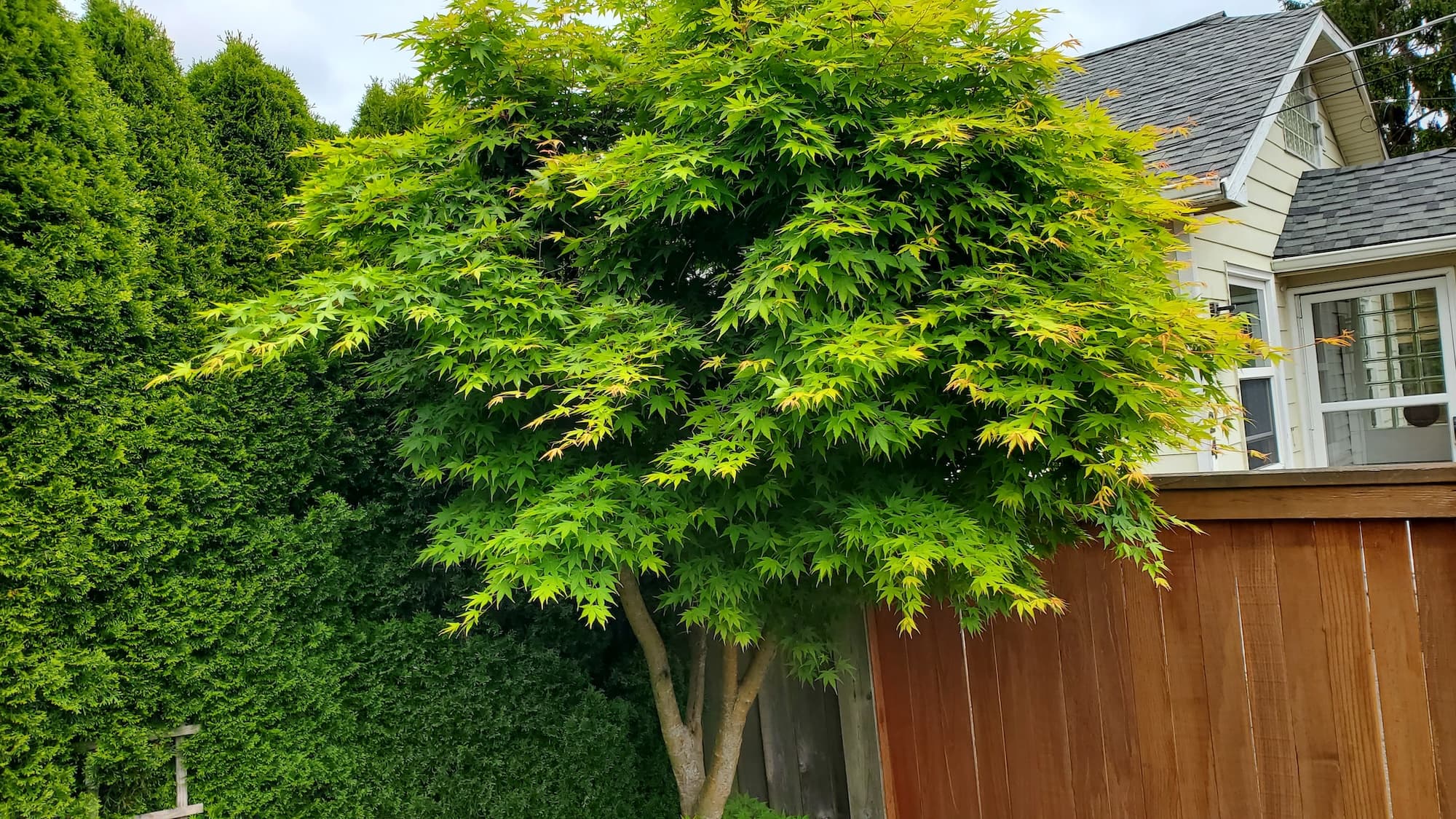White Center Bonsai Tree Pruning — Yard Maintenance
Homeowner’s Issue
White Center and nearby West Seattle neighborhoods get a lot of rainfall, cloudy summers, and soils that can be compacted or heavy with silty loam and patches of clay. That means bonsai and container specimens face slow drainage, moss growth on trunks and soil, and roots that can sit too wet in winter. Many yards here are shaded by evergreens and maples, so sun exposure is limited and seasonal growth patterns are different than in full-sun yards. Slopes and terraces are common on older lots, which makes staking and drainage considerations important for maintaining bonsai health and preventing erosion.
Local weeds like ivy and blackberry encroach fast, and HOA or neighborhood garden rules sometimes limit what you can remove or how a front yard must look. Curb appeal is important in tight neighborhoods near Roxhill Park and the Highline area, so regular, tidy pruning keeps bonsai looking intentional. Sustainable Yard Maintenance here focuses on hand tools, careful timing, and cultural controls—no herbicides—to keep trees healthy and yards looking sharp through wet winters and mild summers.
Our Quality Service
We work with homeowners to keep bonsai healthy, safe, and tidy using techniques suited to West Seattle and White Center microclimates. Services are done by experienced hands: careful assessment, selective pruning, wiring when needed, and clean-up that respects your property. We prioritize practices that improve drainage, reduce moss and rot risk, and promote airflow around trunks and soil.
Benefits:
- Safer yards with reduced risk of weak limbs.
- Better curb appeal for streets near Roxhill Park and local walkways.
- Low-maintenance results that last through Seattle’s rainy season.
- Sustainable methods only — hand weeding, pruning, mulching, and composting; no herbicides.
What’s Included
- Initial assessment of tree health and site conditions.
- Selective branch pruning to shape and remove dead wood.
- Wiring and branch guidance where appropriate.
- Sanitation: tool sterilization to prevent disease spread.
- Debris cleanup and either haul-away or green-bin option.
Options / Upgrades:
- Mulch + fabric for potted or planted bonsai beds.
- Organic soil amendments and slow-release organic fertilizer.
- Repotting and root pruning for root-bound specimens.
- Seasonal care packages and maintenance visits.
Before & After / Expectations
Expect some noise from hand tools and small electric trimmers during the job, and light debris while we shape and clean the specimen. Larger projects may require access to nearby parking and some table space for repotting. We plan around rainy days whenever possible, but pruning windows are often in drier spells late winter to early spring.
Care tips after service:
- Water shallowly and only as needed during heavy rain months.
- Keep wiring checked every 4–8 weeks to prevent girdling.
- Use mulch to suppress moss and weeds, and hand-remove ivy or blackberry runners.
- Schedule follow-ups for shaping and maintenance to keep low overall effort.
FAQs
- How long does a pruning visit take?
- Small bonsai: 30–60 minutes. Larger or repotting jobs: 1–3 hours depending on scope.
- Do you use chemicals to control weeds or moss?
- No. We use mechanical and cultural methods only—hand weeding, mulching, and organic amendments.
- Can you work with HOA rules and front-yard guidelines?
- Yes. We’ll review requirements during the estimate and recommend compliant, attractive solutions.
- What about disposal?
- We offer green-bin composting or haul-away for larger volumes, your choice.
Call to Action
If your White Center or West Seattle yard needs thoughtful, sustainable bonsai care as part of regular Yard Maintenance, book a free estimate. We schedule quickly, deliver reliable results, and work with local conditions in mind. Email neatandtidyseattle@gmail.com to get started.










